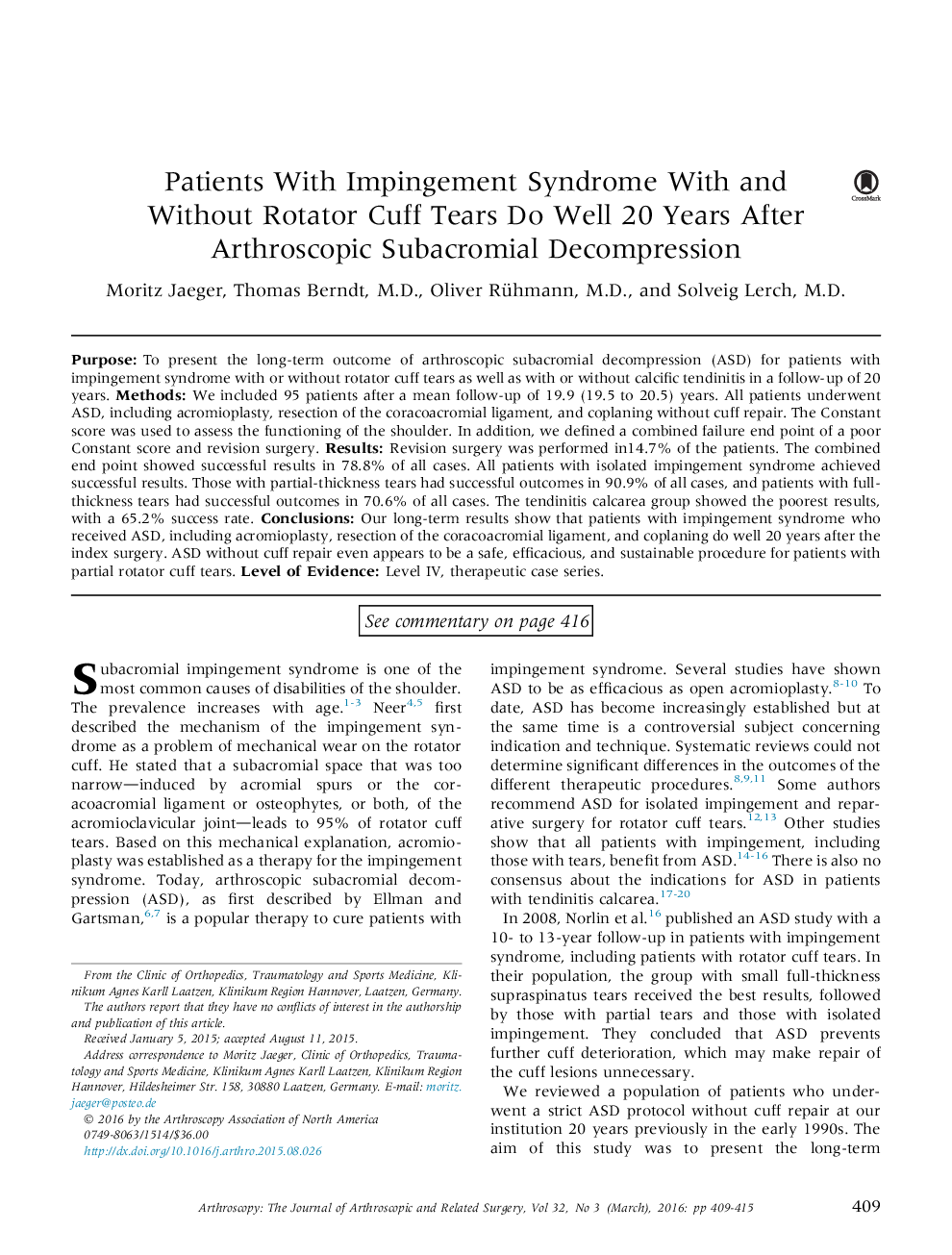| Article ID | Journal | Published Year | Pages | File Type |
|---|---|---|---|---|
| 4041994 | Arthroscopy: The Journal of Arthroscopic & Related Surgery | 2016 | 7 Pages |
PurposeTo present the long-term outcome of arthroscopic subacromial decompression (ASD) for patients with impingement syndrome with or without rotator cuff tears as well as with or without calcific tendinitis in a follow-up of 20 years.MethodsWe included 95 patients after a mean follow-up of 19.9 (19.5 to 20.5) years. All patients underwent ASD, including acromioplasty, resection of the coracoacromial ligament, and coplaning without cuff repair. The Constant score was used to assess the functioning of the shoulder. In addition, we defined a combined failure end point of a poor Constant score and revision surgery.ResultsRevision surgery was performed in14.7% of the patients. The combined end point showed successful results in 78.8% of all cases. All patients with isolated impingement syndrome achieved successful results. Those with partial-thickness tears had successful outcomes in 90.9% of all cases, and patients with full-thickness tears had successful outcomes in 70.6% of all cases. The tendinitis calcarea group showed the poorest results, with a 65.2% success rate.ConclusionsOur long-term results show that patients with impingement syndrome who received ASD, including acromioplasty, resection of the coracoacromial ligament, and coplaning do well 20 years after the index surgery. ASD without cuff repair even appears to be a safe, efficacious, and sustainable procedure for patients with partial rotator cuff tears.Level of EvidenceLevel IV, therapeutic case series.
